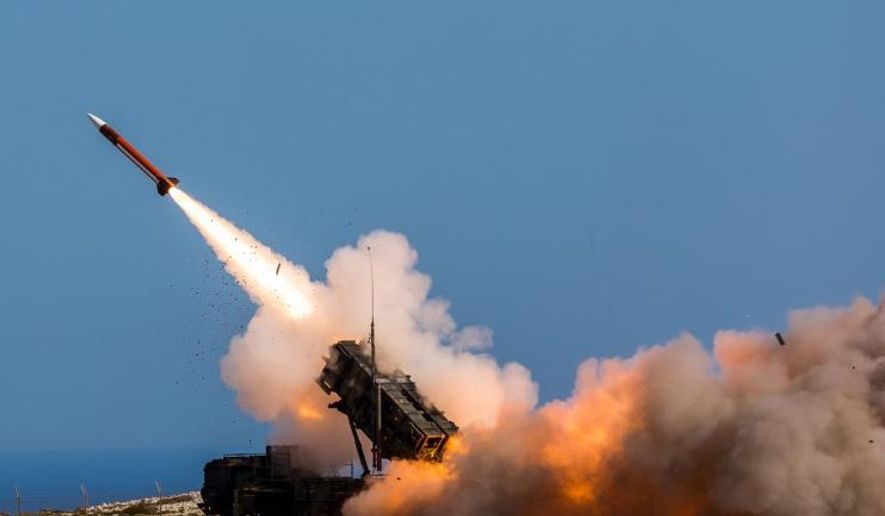The Biden administration did an about-face after insisting that the M1 Abrams was too mechanically complex and required more logistics support than Kyiv could provide, and weeks later said the U.S.-made main battle tank could be sent to Ukraine to help fight Russian invaders.
A top aide to Ukrainian President Volodomyr Zelenskyy said discussions are now in the works about another U.S. weapon system that Washington has ruled out as an option: the MGM-140 Army Tactical Missile System, known as ATACMS.
Presidential adviser Mykhailo Podolyak told Ukraine’s Freedom television network that weapons such as ATACMS are needed to counter Russian artillery, which has caused devastating damage in the 11-month-old war. Mr. Podolyak said Russia maintains more than 100 artillery positions on the occupied Crimean Peninsula.
“To drastically reduce the Russian army’s key weapon — the artillery they use today on the front lines — we need missiles that will destroy their depots,” he said, according to Reuters. “Therefore, firstly, negotiations are already underway. Secondly, negotiations are proceeding at an accelerated pace.”
The Biden administration insists that no weapon system is entirely “off the table” and said it is always looking at the entire range of capabilities of any piece of military hardware.
“Our judgment, to date, has been that the ‘juice isn’t really worth the squeeze’ on the ATACMS,” Colin Kahl, the Defense Department’s undersecretary of defense for policy, told Pentagon reporters. “That judgment at some point could change, but we’re not there yet. There are other capabilities that can enable the Ukrainians to service targets they need to.”
The ATACMS is a surface-to-surface missile manufactured by Lockheed Martin. It has a range of about 190 miles and carries a 500-pound fragmentation warhead. It can be fired from the tracked M270 Multiple Launch Rocket System (MLRS) and the wheeled M142 High Mobility Artillery Rocket System (HIMARS.)
Mr. Zelenskyy said last week that Russian aggression against his country could be stopped only with a steady supply of firepower from the West, such as ATACMS.
“Every Russian missile against our cities, every Iranian drone used by terrorists is an argument why we need more weapons. Only weapons neutralize terrorists,” Mr. Zelenskyy said in his regular address to the Ukrainian people. “This evil, this Russian aggression can and should be stopped with adequate weapons. The terrorist state will not understand anything else.”
Russian escalation fears unfounded, security experts say
Some security analysts say the White House hesitates to provide weapons such as ATACMS to Ukraine out of fear that Moscow will use it as a pretext to escalate the conflict, potentially dragging NATO into the fight.
“It’s the reason we were so meager and slow in providing arms to Ukraine before the invasion,” said Brad Bowman, senior director of the Center on Military and Political Power at the Foundation for Defense of Democracies think tank. He called it the Biden administration’s “provocation premise” and said it is an example of “strategic narcissism.”
“We assume that everything in the world is a reaction to us. There are autocrats and authoritarians who just want to invade and plan to do it unless they hit something hard,” he said.
The ATACMS has more than three times the range of Guided Multiple Launch Rocket System (GMLRS) missiles that Ukrainians are using to significant effect. It would be an ideal weapon to take out any consolidation of Russian troops and logistics centers, Mr. Bowman said.
“It will make invading Russian forces less safe and more vulnerable than they’ve ever been,” he said. “That’s exactly what we want to do if our goal is to ‘defeat’ rather than ‘manage’ the Russian invasion.”
If the White House is concerned that a long-range weapon such as the ATACMS would be fired into Russia, it could make that a condition of any deal with Ukraine. Mr. Bowman said he is confident that Kyiv wouldn’t violate such an agreement with Washington.
“Anytime we’ve asked Ukraine to honor constraints related to our security assistance, they’ve honored them. They’re not going to do anything to endanger that,” he said. “That would be really foolish on the part of the Ukrainians because they wouldn’t get any more from us.”
Republicans and Democrats support ATACMS deal
Sending the ATACMS to Ukraine is an issue uniting Republicans and Democrats in Congress. Rep. Michael T. McCaul, a Texas Republican who chairs the House Foreign Affairs Committee, slammed the White House for dragging its feet on providing the Army missile to Kyiv.
“Every time the [Biden] administration has delayed sending Ukraine a critical weapon system, from Stingers to HIMARS to Bradleys, over fears of Russian escalation, they have been proven completely and utterly wrong,” Mr. McCaul said in a statement. “Instead, these cowardly decisions based on misguided fears of escalation are prolonging this war, emboldening Russia, and condemning thousands of Ukrainians to horrific war crimes, other atrocities, and even death.”
Sen. Lindsey Graham, South Carolina Republican, was part of a bipartisan trio of lawmakers who visited Ukraine this month. Along with Senate Democrats Richard Blumenthal of Connecticut and Sheldon Whitehouse of Rhode Island, Mr. Graham called on the White House to immediately send Ukraine more long-range artillery such as ATACMS.
“Longer-range rockets will help stop the [Russian] counteroffensive that is building in the east. The HIMARS have been worth their weight in gold. ATACMS is a rocket system that has longer range,” Mr. Graham told reporters after the trip. “Give them the weapons they need to beat the Russians on the battlefield.”
Mr. Blumenthal said the Pentagon has “consistently underestimated” Kyiv’s military forces but Ukrainians have always outperformed any expectations.
“Our military leaders say it will take too long to train them on the Abrams tank or to fly the F-16. Just give them a chance,” Mr. Blumenthal said. “Give them whatever it takes to win and reconquer the territory that Putin has seized.”
• Mike Glenn can be reached at mglenn@washingtontimes.com.




Please read our comment policy before commenting.